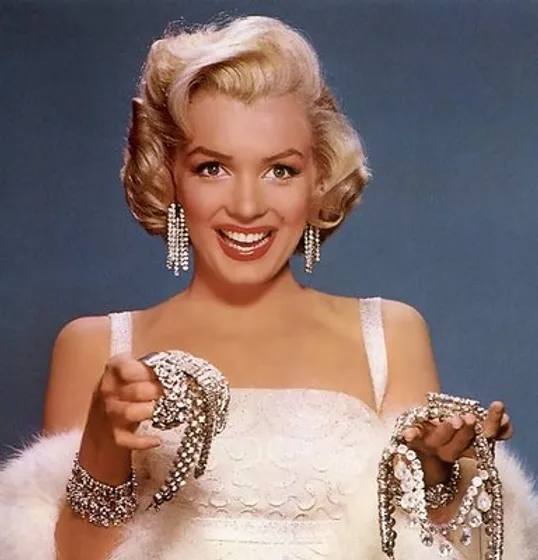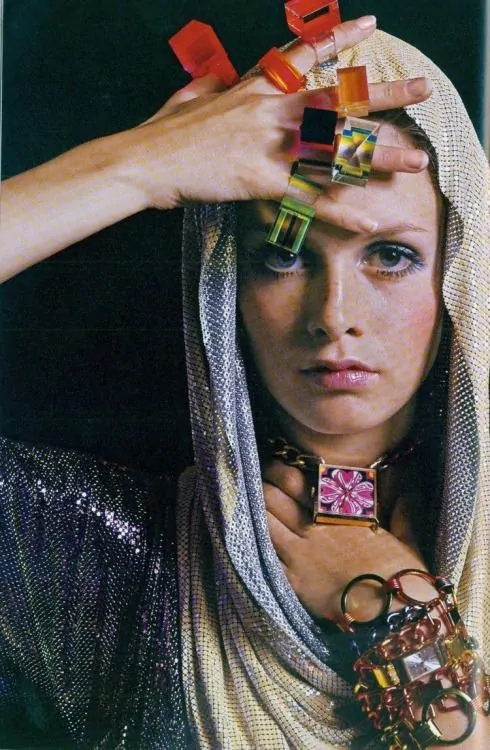
Image Source; Naveste.com
Vintage jewellery will always remain a popular choice in the world of second hand shopping and collecting - we love it so much its even part of our name! Whilst there is a slight blur in the exact time of when vintage starts and ends, we're looking at a window of 20-100 years ago but this differs based on opinion, we can't help but think that this era during the best part of the 20th century has been revolutionary in the styles of jewellery that we wear and love today.
Much like Georgian and Victorian jewellery, it has a very distinct style. What is so unbelievable is that even between each decade of the vintage era there is a significant and distinctive shift in style based on the current affairs, pop culture and material and technology progression. This has resulted in a total array of gorgeous (and not so lovely!) styles of jewellery that we can look back on and get excited over.
We're created a brief overview of the vintage decades and the jewellery styles that came with them.
1920's

Image source; 1920's fashion and music.com
The 1920's is best known as the 'Roaring 20's', with the birth of art deco design and flapper girls. It was the first decade to have a real modern feel to it after following a very feminine Edwardian era, with geometric design being a key influence in architecture, graphics and jewellery. The Bauhaus and Modernist eras were beginning with clean edges and hard lines being a common design choice. New advances in gemstone cutting machines allowed this to be replicated in new gem cuts such as 'baguette' styles.
Flapper girls is probably the most iconic thing to come from the 20's, with flapper style dresses being paired with tassel jewellery, pearls and bangles to be worn when out doing the Charleston dance.
1930's

Image source; Reiners fine jewelry
The 1930's saw the Great Depression, an terrible economic time that affected the whole western world. Where people needed to cut back on lavish spending, Hollywood saw this as an opportunity to make films full of luxury and lavish as an escape. The 'Hollywood Glamour' of the 1930's brought extravagant diamonds, pearls, and heavy beads onto the silver screen, all of which still had a notable modern feel that had continued from the 1920's. This over time filtered down into consumers who wanted their own slice of the luxury Hollywood life.
1940's

Image source; Gallery Penelope
This decade saw a war that reached virtually the whole world. With rations on materials and lack of money, life generally became less about luxury and more about finding joy in a more austere time. Jewellery production slowed massively with the factories being used to craft war equipment, with many metals being preserved for war materials. Sterling silver was not considered as a precious metal so was therefore permitted to be used to make a small amount of jewellery.
Escapism played a huge role in the 40's, with costume jewellery being heavily popular as a way to bring femininity in a time where gender was starting to blur. Surrealism was a key style amongst the luxury world of jewellery as it explored a lot of symbolism and beauty in a different manor, particularly through Schiaparelli. There was a heavy theme of red, white and blue gemstones in star, flag and military motifs as a way of being patriotic.
1950's

Image source; myvintage.uk
The 1950's was a decade full of bouncing back after the war. After a long time of no money, destruction and drab wartime colours, the 50's had a resurgence of vibrant colours and exciting materials. Cartier took great joy in encrusting everything in diamonds, and the popularity of pearls returned whether they were natural, cultured or fake. There was a large floral theme, which is thought to be influenced by the rebirth of post-war life, and Dior's 'New Look' of women saw new heights of femininity and romanticism after many years of make-do-and-mend.
1960's

Image source; jewelryshoppingguide.com
The 1960's is arguably the most iconic decade of the vintage era, with Pop Art and Twiggy being at the centre of it all. A decade that saw real change, being seen as futuristic at the time. New waves of life were apparent, with The Beatles bringing a new type of music, and Mary Quant rewriting the styles of women's fashion. The Pop Art movement brought a primary colour palette in Perspex and Vinyl. The jewellery from this era was made to be cheap and cheerful, whilst the pieces may not have been the most sustainable, their importance and influence will last for eternity!
1970's

Image source; pinterest
"Make Love, Not War" is a slogan that stems from the 1970's. Identity was being explored on new levels, with radical feminism influencing clothing and fashion choices into a means and self-expression. Jewellery became an art form with symbolic messages, with body jewellery being celebrating a number of cultures and punks wearing it as a message of protest. This new style of referencing different cultures was very apparent, with a high use of Mexican turquoise, African body jewellery and "Canadian Brutalism"; hammered textured metal set with murano glass cabochons.
1980's

Image source; vinty jewellery
The "power" decade of the 1980's was a continuation of the 70's. The subculture movement in the UK saw the New Romantics and Punks have a huge influence on fashion and jewellery styles. Ropes and chains of the punks became more chic and stylised, whilst pop princesses such as Madonna became every girls icon; whatever she wore would be reproduced and copied on the streets through knock-off jewellery. Japanese designers brought the colour black into popularity for the first time to be paired with monochrome diamonds and pearls to create a sexy and powerful look.
The UK saw its first female prime minister, and power dressing was born, with chic, sleek and effortless luxury jewellery seen as a sign of a successful and powerful woman.
1990's

Image source; Cosmopolitan
The 'newest' and final vintage decade of the 1990's is certainly known as a fashion, trend-driven decade. There was a gothic phase, a grunge phase and pop culture was at its height having an influence on what everyone was wearing. It's a close call between Rachel from Friends and Princess Diana for the face of the decade, both having iconic looks that will remain in our history forever - we're dreaming of that Sapphire and Pearl choker Diana wore in that revenge look.
Modernism and technology evolved even further, with boundaries being pushed from all angles, and whilst luxury jewellery wasn't having the best time, high street jewellery was accessible and loved by everyone as it was a way of copying what their favourite stars were wearing. Those lace chokers were worn by literally everyone after being seen on the red carpet.
It's hard to choose a favourite decade as each one has so many different styles and influences that you can really see in the jewellery of today. Shopping vintage is a great way to celebrate this iconic era, find below some of our favourite vintage pieces, and let us know in the comments your favourite decade!
